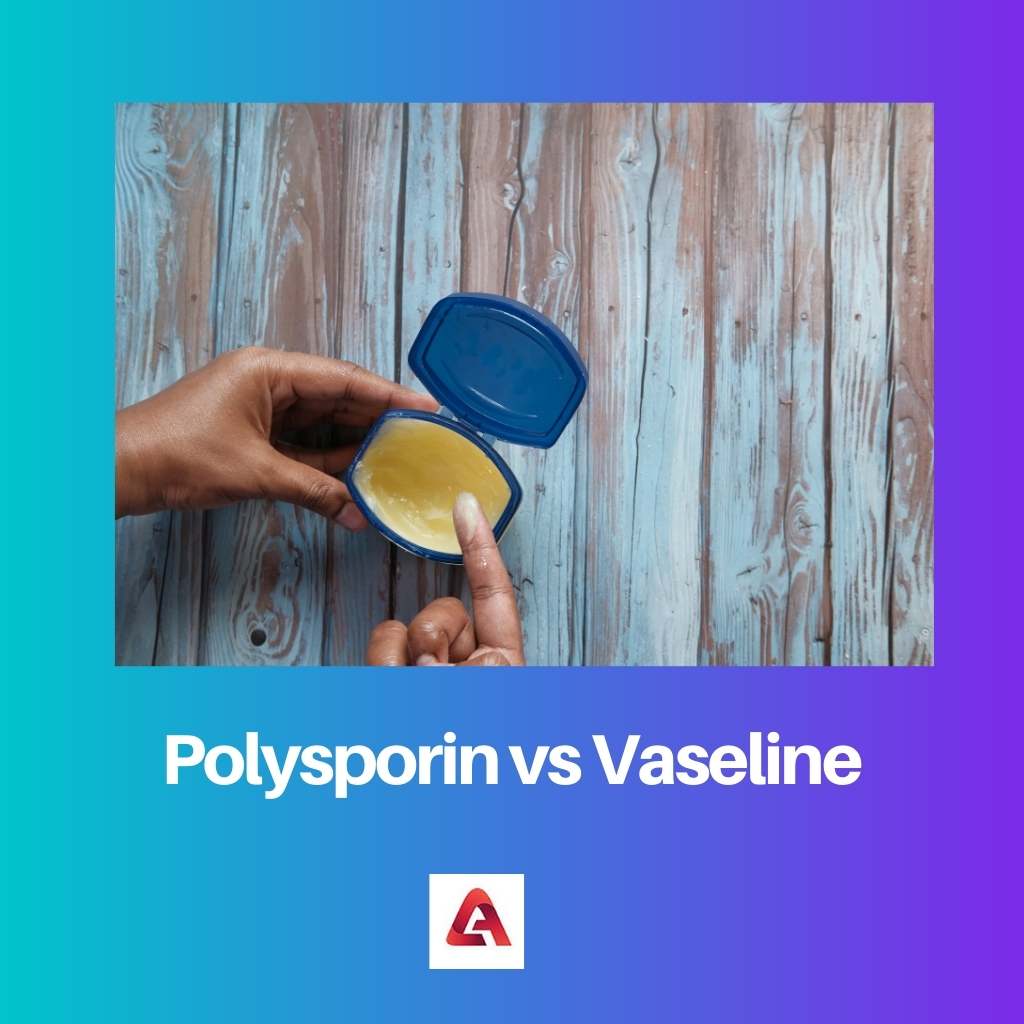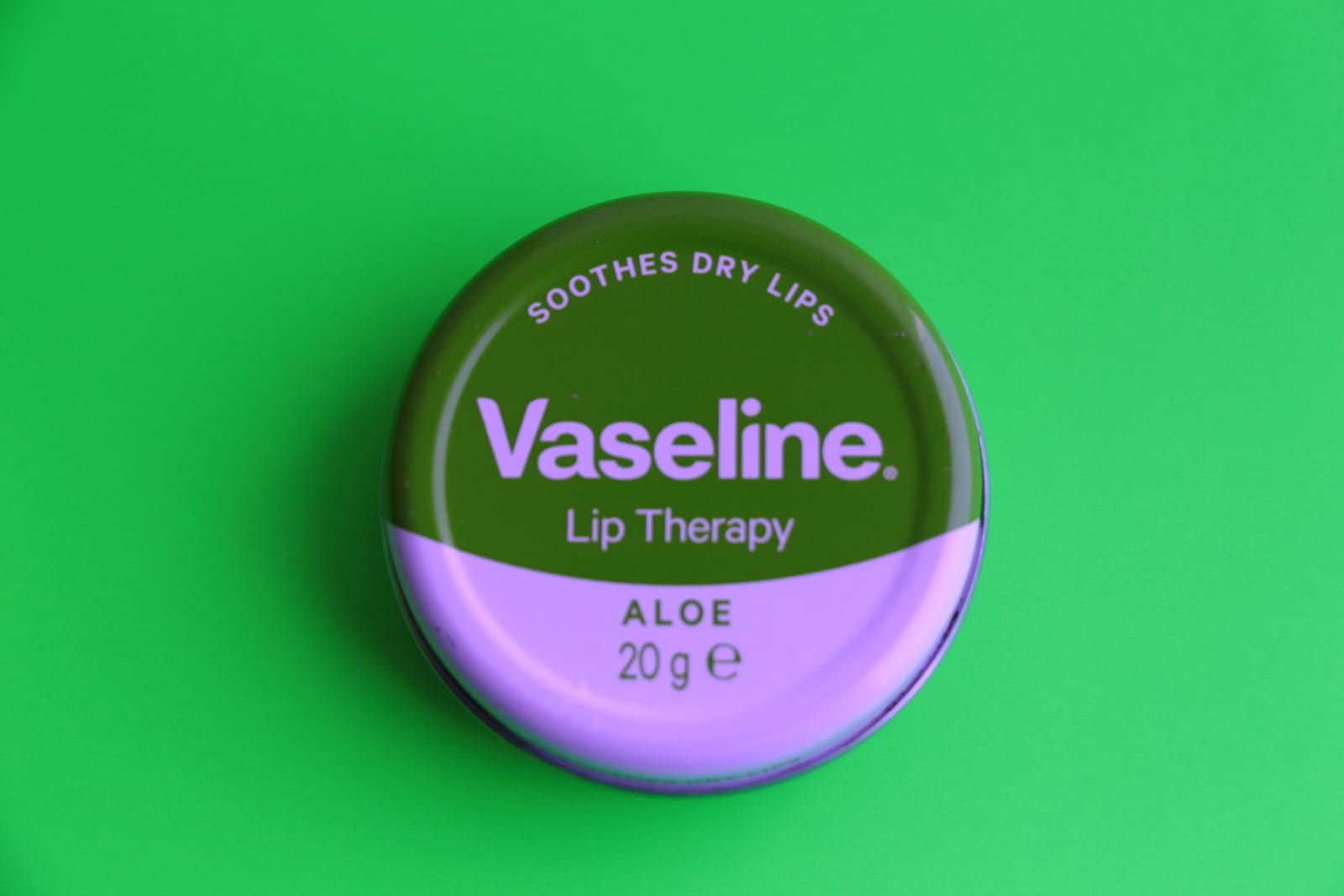Both polysporin and Vaseline are ointment-like healers used for wounds and burns. They are both used to help speed up the process of healing wounds, that is, by helping in the clotting process.
By doing this, polysporin and Vaseline act as infection-preventing agents by reducing the risk of bacteria attacking the open wound.
Key Takeaways
- Polysporin is an antibiotic ointment that helps prevent infections in minor wounds, while Vaseline is a petroleum jelly product that provides a barrier to protect and moisturize skin.
- Polysporin contains active ingredients, such as bacitracin and polymyxin B, whereas Vaseline has no active ingredients and is chemically inert.
- Vaseline suits various skin types and conditions, while Polysporin is specifically designed to treat minor cuts, scrapes, and burns.
Polysporin vs Vaseline
The difference between polysporin and Vaseline is that, while Vaseline is petroleum jelly, made from the byproducts of petroleum drilled from beyond the ocean bed, polysporin is an antibiotic ointment made from many ingredients having multiple medicinal properties that aid in healing wounds.

Polysporin has a mix of ingredients that help stall the growing bacteria, acting as an anti-infection ointment.
Once applied to an open wound or scab, it prevents certain bacteria from coming in contact with the flesh or blood, thereby ensuring a septic condition until it heals.
Vaseline, being a petroleum product, has its sets of merits and demerits. Like polysporin, it also, to some extent, helps with the prevention of bacterial growth in a wound. It creates a waxy layer, thereby cutting off moisture exposure to the wound.
Comparison Table
| Parameters of Comparison | Polysporin | Vaseline |
|---|---|---|
| Company | Johnson and Johnson | Unilever |
| Key Ingredients | Polymixin B and Bacitracin Zinc | Petroleum jelly |
| Inflammation Property | Has anti inflammation property. | Has no anti-inflammation property. |
| Viscosity | Less | More in comparison. |
| Ointment Type | Antibiotic | Jelly |
What is Polysporin?
Polysporin is an antibiotic ointment that is manufactured and brought to the market by business giant Johnson and Johnson.
Polysporin helps prevent infection and also helps in a fast recovery.
It contains polymixin B and Bacitracin, which aids the process of giving the user a speedy recovery.
The other ingredients that are seen in polysporin are Garamycin or gramicidin, both of which are active against a wide range of bacteria such as Staphylococcus aureus, some species belonging to the genus Neisseria, etc.
It is used for minor wounds or cuts and also for first-degree burns and scrapes.
The ingredient Bacitracin zinc is an allergen that, when applied to an open wound on people prone to allergies, can cause a massive allergic reaction.
Therefore, it is better to test it on the closed skin as an allergy test.
The property of polysporin that prevents bacterial growth helps it to act as an anti-infection skin ointment to protect the susceptible parts of our body. It prevents the infection from spreading.
It is common among users to apply polysporin over a scathed skin area before covering it up with band-aids or bandages.
This is because, over the fact that it stops infection, polysporin also helps the band-aid stick better.
People do not always prefer applying polysporin on open wounds because it is ok to leave a wound open and uncared for.
But if the wound has a chance of becoming dirty or is at risk of being irritated, it is better to cover it up for safety.
It is not an immediate medicine for scabs or wounds, but a definite improvement in symptoms is seen once applied given time, say a day or two.
Another major advantage of polysporin is that it contains an anti-inflammatory drug from the cortisone family (corticosteroid) and is used for inflammation and itching.
What is Vaseline?
Vaseline is a petroleum jelly introduced by the Anglo-Dutch firm Unilever.
It was initially prepared by Robert Chesebrough, and by the year 1987, Unilever took it over.
It is used for an effective response against cuts, burns, and scrapes, but it has no medicinal effect but to protect the wound.
It acts as a catalyst in the healing process, speeding the recovery of a semi-clotted wound.
Vaseline completely cuts off the bacterial interaction of the wound by creating a waxy layer over and around d the wound, hence keeping off the moisture that might eventually lead to infection.
Other than keeping the moisture off, it also helps to heal the injured skin as it helps keep the sealed skin moist but without the infection.
It also prevents the skin from drying up and creating scabs. A wound that has formed a scab takes much longer to heal.
It also helps control the scar after a wound heals by not letting it grow and helps it from drying up or from being itchy.
Vaseline is just as effective as an antibiotic ointment.
For wounds that are non Infectious, it is better not to apply iodine or hydrogen peroxide or any other ointment of such nature as it can harm the skin and delay healing.
It could even burn the flesh, depending on the concentration of the applied ointment.
Vaseline is 100% petroleum jelly, a mixture of mineral oils and waxes that eventually firm the semi-solid-like substance.
Other functions of Vaseline are that is relieving dry skin, preventing chafing, treating diaper rash on babies, and rehydrating the nails.

Main Differences Between Polysporin and Vaseline
- While Vaseline is hundred percent a single Ingredient product, polysporin has a multitude of ingredients.
- Another company has taken over Vaseline after its original creation, whereas polysporin remains in the hands of its initial producers.
- Polysporin acts against a large number of bacteria, though it doesn’t inhibit growth, it stops spreading, while Vaseline doesn’t specifically stop bacterial spread or growth.
- While polysporin contains anti-inflammatory drugs to prevent inflammation, Vaseline doesn’t give such properties.
- As any ointment is preferably not applied on a burn, Vaseline is not at all preferred due to its highly sticky nature, while polysporin can be applied on first-degree burns.
- https://www.cambridge.org/core/journals/infection-control-and-hospital-epidemiology/article/utility-of-polysporin-ointment-in-the-eradication-of-methicillinresistant-staphylococcus-aureus-colonization-a-pilot-study/282F493DB5BE2AF023D6E28390A8B4F9
- https://link.springer.com/article/10.1007/s00404-011-1919-5



